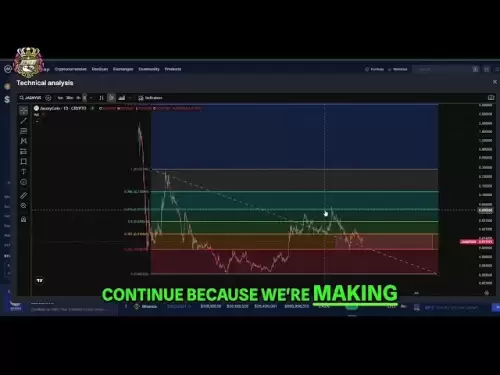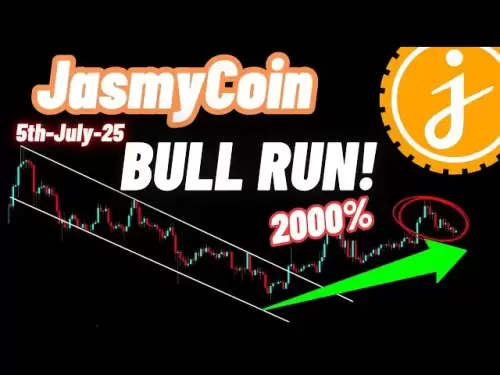-
 Bitcoin
Bitcoin $108,250.0992
0.11% -
 Ethereum
Ethereum $2,515.9404
0.03% -
 Tether USDt
Tether USDt $1.0003
0.00% -
 XRP
XRP $2.2166
-0.19% -
 BNB
BNB $656.5904
0.29% -
 Solana
Solana $147.4122
-0.58% -
 USDC
USDC $1.0000
-0.01% -
 TRON
TRON $0.2830
0.06% -
 Dogecoin
Dogecoin $0.1641
0.27% -
 Cardano
Cardano $0.5739
-0.19% -
 Hyperliquid
Hyperliquid $39.1463
-0.11% -
 Sui
Sui $2.8882
-0.02% -
 Bitcoin Cash
Bitcoin Cash $487.6428
0.31% -
 Chainlink
Chainlink $13.2097
0.07% -
 UNUS SED LEO
UNUS SED LEO $9.0308
0.10% -
 Avalanche
Avalanche $17.8608
0.13% -
 Stellar
Stellar $0.2379
-0.06% -
 Toncoin
Toncoin $2.7400
-0.39% -
 Shiba Inu
Shiba Inu $0.0...01144
-0.36% -
 Litecoin
Litecoin $87.5467
0.66% -
 Hedera
Hedera $0.1538
0.22% -
 Monero
Monero $315.5479
0.36% -
 Dai
Dai $1.0000
0.00% -
 Polkadot
Polkadot $3.3523
-0.71% -
 Ethena USDe
Ethena USDe $1.0003
0.01% -
 Bitget Token
Bitget Token $4.3960
-1.03% -
 Uniswap
Uniswap $7.2663
4.19% -
 Aave
Aave $272.8619
2.04% -
 Pepe
Pepe $0.0...09676
-0.18% -
 Pi
Pi $0.4586
-2.87%
Is VWAP useful for grid trading? How to set up range fluctuations?
VWAP enhances grid trading by providing a dynamic reference for adjusting grid levels, improving entry and exit points based on real-time market data.
May 21, 2025 at 05:42 pm
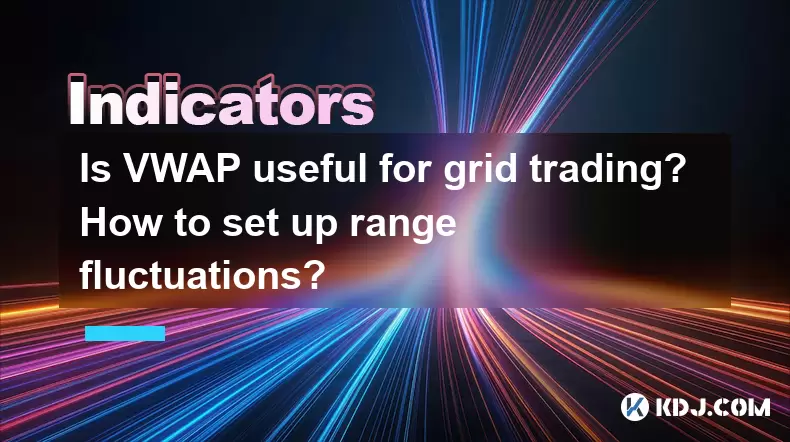
Is VWAP useful for grid trading? How to set up range fluctuations?
Volume Weighted Average Price (VWAP) is a trading benchmark used by many traders to determine the average price at which a cryptocurrency has traded throughout the day, based on both volume and price. It is particularly useful for traders looking to assess the efficiency of their trades and for institutional investors who need to execute large orders without significantly impacting the market price. When it comes to grid trading, a strategy where buy and sell orders are placed at regular intervals within a specified range, the question arises whether VWAP can enhance the effectiveness of this approach.
VWAP can be highly beneficial for grid trading because it provides a dynamic reference point that can help traders adjust their grid levels in response to changing market conditions. By integrating VWAP into a grid trading strategy, traders can potentially improve their entry and exit points, leading to more profitable trades. In this article, we will explore how VWAP can be used in grid trading and how to set up range fluctuations effectively.
Understanding VWAP and Its Application in Grid Trading
VWAP is calculated by taking the total dollar amount traded for every transaction (price multiplied by the number of shares traded) and then dividing it by the total shares traded for the day. The formula for VWAP is:
[ \text{VWAP} = \frac{\sum(P_i \times V_i)}{\sum V_i} ]
where ( P_i ) is the price of the trade and ( V_i ) is the volume of the trade.
In grid trading, the strategy involves setting up a series of buy and sell orders at predetermined price levels within a specific range. The goal is to profit from the volatility of the market by buying low and selling high within this range. By incorporating VWAP, traders can use it as a moving average to adjust their grid levels dynamically.
For example, if the current market price is above the VWAP, it might indicate that the asset is overvalued, suggesting that traders should consider placing more sell orders within their grid. Conversely, if the market price is below the VWAP, it could signal that the asset is undervalued, prompting traders to place more buy orders.
Setting Up Grid Trading with VWAP
To set up grid trading with VWAP, traders need to follow a series of steps to ensure their strategy is effectively implemented. Here's a detailed guide on how to do it:
Choose a Trading Platform: Select a trading platform that supports grid trading and provides access to VWAP data. Popular platforms include Binance, KuCoin, and Bybit.
Determine the Range: Decide on the upper and lower bounds of your trading range based on historical price data and market analysis. This range should be wide enough to capture significant price movements but not so wide that it becomes unmanageable.
Calculate Grid Levels: Divide the range into equal intervals. The number of intervals depends on your trading strategy and risk tolerance. For instance, if your range is between $100 and $200, and you want 10 intervals, each grid level would be $10 apart.
Integrate VWAP: Use the VWAP as a reference point to adjust your grid levels. If the VWAP moves significantly, you might need to recalibrate your grid to ensure it remains effective.
Set Up Orders: Place buy orders at the lower grid levels and sell orders at the higher grid levels. Ensure that your orders are aligned with the VWAP to optimize your trading strategy.
Monitor and Adjust: Continuously monitor the market and VWAP. Adjust your grid levels as necessary to respond to changes in market conditions.
Setting Up Range Fluctuations
Range fluctuations are crucial for grid trading because they determine the price levels at which buy and sell orders are placed. Setting up range fluctuations effectively involves understanding market volatility and using technical indicators to predict future price movements.
Analyze Historical Data: Start by analyzing historical price data to identify typical price ranges and volatility patterns. This can help you set realistic upper and lower bounds for your trading range.
Use Technical Indicators: Employ technical indicators such as Bollinger Bands, Average True Range (ATR), and Moving Averages to gauge market volatility and predict potential price movements. These indicators can help you set more accurate range fluctuations.
Set Dynamic Ranges: Consider using dynamic ranges that adjust based on real-time market data. This can be particularly useful in volatile markets where price movements are unpredictable.
Test Different Scenarios: Before implementing your grid trading strategy, test different range fluctuation scenarios using a demo account or backtesting software. This can help you refine your approach and identify potential pitfalls.
Monitor Market Conditions: Continuously monitor market conditions and adjust your range fluctuations as necessary. Pay attention to news events, economic reports, and other factors that could impact market volatility.
Benefits of Using VWAP in Grid Trading
Using VWAP in grid trading offers several benefits that can enhance the effectiveness of the strategy. Here are some key advantages:
Improved Entry and Exit Points: By using VWAP as a reference point, traders can optimize their entry and exit points, potentially leading to higher profits.
Dynamic Adjustments: VWAP allows traders to dynamically adjust their grid levels based on real-time market data, making their strategy more responsive to changing conditions.
Better Risk Management: Incorporating VWAP into grid trading can help traders manage risk more effectively by providing a clearer picture of market trends and price levels.
Enhanced Decision-Making: With VWAP, traders have access to a valuable tool that can inform their decision-making process, helping them make more informed trading decisions.
Challenges and Considerations
While VWAP can enhance grid trading, there are also challenges and considerations that traders need to be aware of. Here are some key points to keep in mind:
Complexity: Integrating VWAP into a grid trading strategy can add complexity to the trading process. Traders need to be comfortable with the technical aspects of VWAP and grid trading.
Market Conditions: VWAP is most effective in liquid markets with high trading volumes. In less liquid markets, the accuracy of VWAP may be compromised, affecting its usefulness in grid trading.
Time Frame: The effectiveness of VWAP can vary depending on the time frame used. Traders need to choose an appropriate time frame that aligns with their trading strategy and market conditions.
False Signals: Like any technical indicator, VWAP can generate false signals. Traders need to combine VWAP with other indicators and analysis techniques to reduce the risk of false signals.
Practical Example of VWAP in Grid Trading
To illustrate how VWAP can be used in grid trading, let's consider a practical example. Suppose you are trading Bitcoin (BTC) on the Binance platform, and you want to set up a grid trading strategy using VWAP.
Step 1: Choose your trading range based on historical data. Let's say the range is between $30,000 and $35,000.
Step 2: Divide the range into equal intervals. For simplicity, let's use 10 intervals, so each grid level is $500 apart.
Step 3: Calculate the VWAP for the current trading day. Suppose the VWAP is $32,500.
Step 4: Set up your grid levels. Place buy orders at the lower grid levels (e.g., $30,000, $30,500, $31,000, etc.) and sell orders at the higher grid levels (e.g., $34,500, $35,000).
Step 5: Monitor the VWAP throughout the day. If the VWAP moves to $33,000, adjust your grid levels accordingly. You might shift your buy orders up slightly and your sell orders down slightly to align with the new VWAP.
Step 6: Continuously monitor the market and adjust your grid levels as needed. If the market becomes more volatile, you might need to widen your range or adjust your intervals.
By following these steps and using VWAP as a guide, you can enhance your grid trading strategy and potentially achieve better results.
Frequently Asked Questions
Q: Can VWAP be used for other trading strategies besides grid trading?
A: Yes, VWAP can be used in various trading strategies, including trend following, mean reversion, and breakout trading. It provides a useful benchmark for assessing trade execution and market trends, making it versatile across different trading approaches.
Q: How often should I recalculate the VWAP for grid trading?
A: The frequency of recalculating VWAP depends on your trading strategy and time frame. For intraday trading, you might recalculate VWAP every few minutes or hours. For longer-term trading, daily or weekly recalculations might be sufficient.
Q: Are there any specific cryptocurrencies that are better suited for VWAP-based grid trading?
A: VWAP is most effective for highly liquid cryptocurrencies like Bitcoin and Ethereum. These assets have high trading volumes, which ensures the accuracy of VWAP calculations. Less liquid cryptocurrencies might not provide reliable VWAP data, making them less suitable for this strategy.
Q: How can I automate VWAP-based grid trading?
A: Many trading platforms offer API access and automated trading features that can be used to implement VWAP-based grid trading. You can use programming languages like Python to create scripts that automatically calculate VWAP and adjust your grid levels based on real-time market data.
Disclaimer:info@kdj.com
The information provided is not trading advice. kdj.com does not assume any responsibility for any investments made based on the information provided in this article. Cryptocurrencies are highly volatile and it is highly recommended that you invest with caution after thorough research!
If you believe that the content used on this website infringes your copyright, please contact us immediately (info@kdj.com) and we will delete it promptly.
- XRP's Upside Potential: Analysts Bullish Despite Accessibility Concerns
- 2025-07-06 10:30:13
- Dubai Hotelier, Crypto Scam, and an Arrest in India: A Tangled Web
- 2025-07-06 10:30:13
- Bitcoin's Calm Before the Storm: ETF Inflows Surge Amidst Low Volatility
- 2025-07-06 10:50:13
- Crypto Capital Inflows: Why Qubetics, Ethereum, and SUI are Investment Coins to Watch
- 2025-07-06 10:50:13
- Bitcoin, Crypto, and Polymarket: Decoding the Crystal Ball
- 2025-07-06 11:15:22
- XRP Price Prediction: Can XRP Break the Weekly Downtrend?
- 2025-07-06 11:00:13
Related knowledge
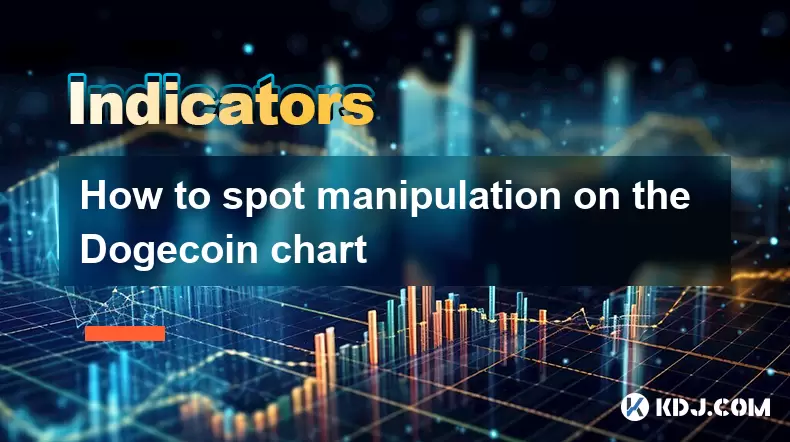
How to spot manipulation on the Dogecoin chart
Jul 06,2025 at 12:35pm
Understanding the Basics of Chart ManipulationChart manipulation in the cryptocurrency space, particularly with Dogecoin, refers to artificial price movements caused by coordinated trading activities rather than genuine market demand. These manipulations are often executed by large holders (commonly known as whales) or organized groups aiming to mislead...
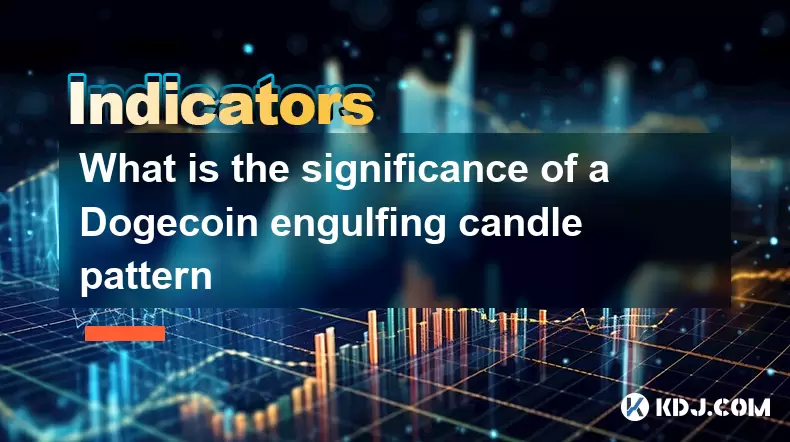
What is the significance of a Dogecoin engulfing candle pattern
Jul 06,2025 at 06:36am
Understanding the Engulfing Candle Pattern in CryptocurrencyThe engulfing candle pattern is a significant technical analysis tool used by traders to identify potential trend reversals in financial markets, including cryptocurrencies like Dogecoin. This pattern typically consists of two candles: the first one is relatively small and indicates the current...
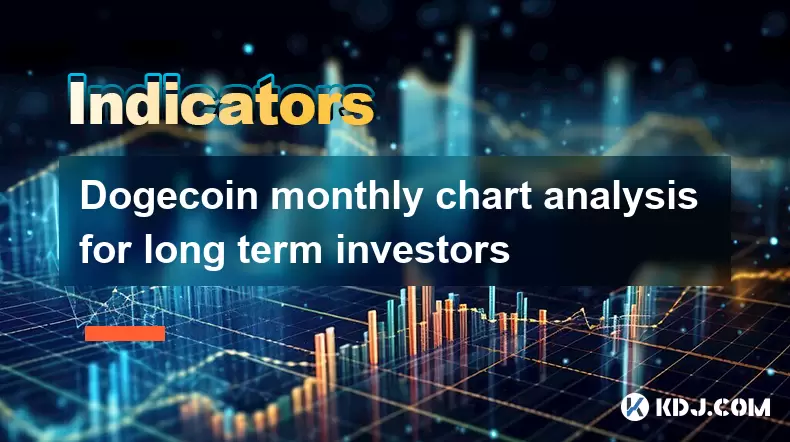
Dogecoin monthly chart analysis for long term investors
Jul 06,2025 at 10:08am
Understanding the Dogecoin Monthly ChartFor long-term investors, analyzing the monthly chart of Dogecoin (DOGE) provides a macro view of its price behavior over extended periods. The monthly chart captures major trends, key resistance and support levels, and potential reversal zones that are crucial for strategic investment planning. Unlike daily or hou...
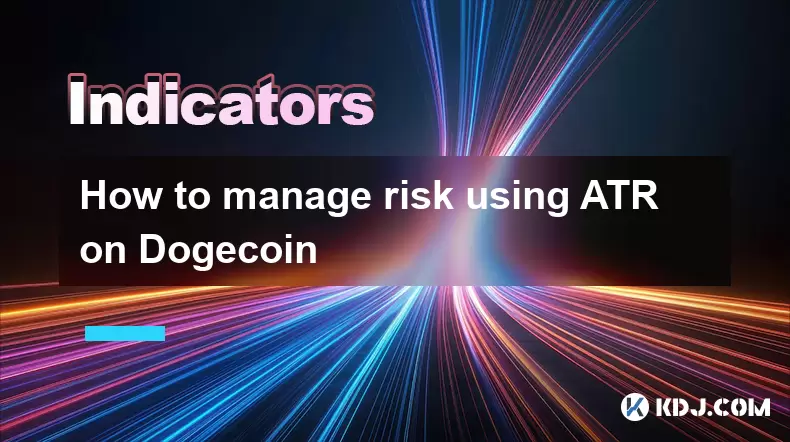
How to manage risk using ATR on Dogecoin
Jul 06,2025 at 02:35am
Understanding ATR in Cryptocurrency TradingThe Average True Range (ATR) is a technical indicator used to measure market volatility. Originally developed for commodities, it has found widespread use in cryptocurrency trading due to the high volatility inherent in digital assets like Dogecoin (DOGE). The ATR calculates the average range of price movement ...
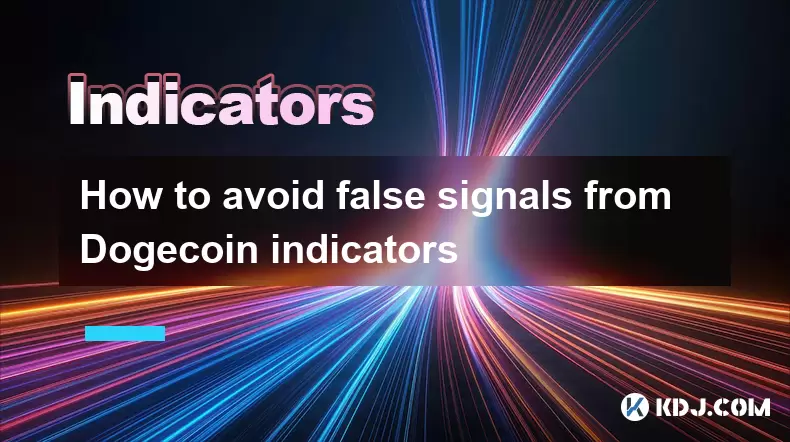
How to avoid false signals from Dogecoin indicators
Jul 06,2025 at 06:49am
Understanding Dogecoin Indicators and Their LimitationsDogecoin indicators are tools used by traders to analyze price movements and make informed decisions. These include moving averages, Relative Strength Index (RSI), MACD, and volume-based metrics. However, these tools can sometimes generate false signals, especially in highly volatile markets like Do...
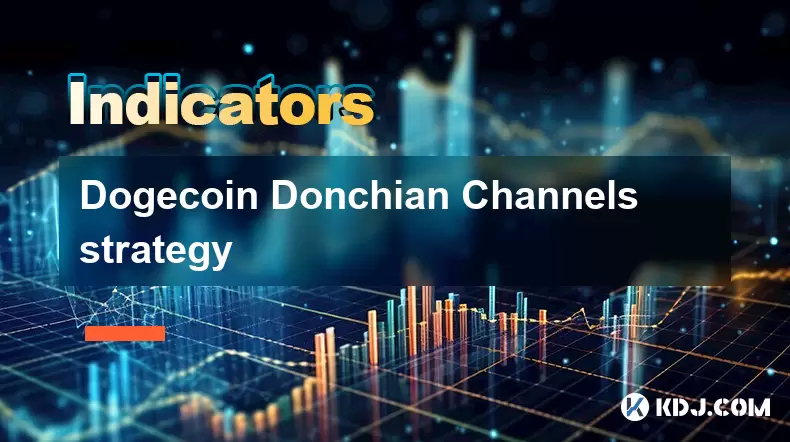
Dogecoin Donchian Channels strategy
Jul 06,2025 at 02:43am
What Are Donchian Channels?Donchian Channels are a technical analysis tool used to identify potential breakouts, trends, and volatility in financial markets. They consist of three lines: the upper band, which marks the highest high over a specific period; the lower band, which reflects the lowest low over the same period; and the middle line, typically ...

How to spot manipulation on the Dogecoin chart
Jul 06,2025 at 12:35pm
Understanding the Basics of Chart ManipulationChart manipulation in the cryptocurrency space, particularly with Dogecoin, refers to artificial price movements caused by coordinated trading activities rather than genuine market demand. These manipulations are often executed by large holders (commonly known as whales) or organized groups aiming to mislead...

What is the significance of a Dogecoin engulfing candle pattern
Jul 06,2025 at 06:36am
Understanding the Engulfing Candle Pattern in CryptocurrencyThe engulfing candle pattern is a significant technical analysis tool used by traders to identify potential trend reversals in financial markets, including cryptocurrencies like Dogecoin. This pattern typically consists of two candles: the first one is relatively small and indicates the current...

Dogecoin monthly chart analysis for long term investors
Jul 06,2025 at 10:08am
Understanding the Dogecoin Monthly ChartFor long-term investors, analyzing the monthly chart of Dogecoin (DOGE) provides a macro view of its price behavior over extended periods. The monthly chart captures major trends, key resistance and support levels, and potential reversal zones that are crucial for strategic investment planning. Unlike daily or hou...

How to manage risk using ATR on Dogecoin
Jul 06,2025 at 02:35am
Understanding ATR in Cryptocurrency TradingThe Average True Range (ATR) is a technical indicator used to measure market volatility. Originally developed for commodities, it has found widespread use in cryptocurrency trading due to the high volatility inherent in digital assets like Dogecoin (DOGE). The ATR calculates the average range of price movement ...

How to avoid false signals from Dogecoin indicators
Jul 06,2025 at 06:49am
Understanding Dogecoin Indicators and Their LimitationsDogecoin indicators are tools used by traders to analyze price movements and make informed decisions. These include moving averages, Relative Strength Index (RSI), MACD, and volume-based metrics. However, these tools can sometimes generate false signals, especially in highly volatile markets like Do...

Dogecoin Donchian Channels strategy
Jul 06,2025 at 02:43am
What Are Donchian Channels?Donchian Channels are a technical analysis tool used to identify potential breakouts, trends, and volatility in financial markets. They consist of three lines: the upper band, which marks the highest high over a specific period; the lower band, which reflects the lowest low over the same period; and the middle line, typically ...
See all articles





















